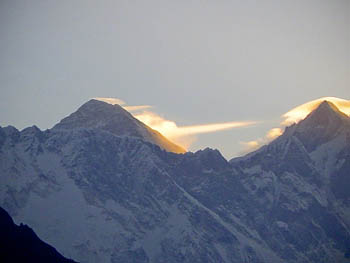
Everest: human waste a major problem
Helicopter parts and 69 oxygen bottles were among nearly a tonne of rubbish removed from Everest by a group of mountaineers earlier this year.
A climber’s body was also recovered and given a formal burial by the Eco Everest Expedition, formed with the goal of promoting environmentally friendly mountaineering.
The climber’s body, believed to be from a group of British mountaineers which attempted Everest in 1972, was found at the foot of the Khumbu icefall. The remains were removed from the glacier and given a burial ceremony.
The expedition was lead by Dawa Steven Sherpa and recovered 965kg of debris and rubbish from the slopes of Everest, including bits of an Italian helicopter that crashed in 1973. Mountaineers were paid 75 US cents for every kilogram of rubbish brought down.
The expedition also tested equipment designed to have less of an impact on the fragile environment of the Himalaya. A major problem with the area, as its popularity with summiteers has soared, is the amount of human waste left on the mountain. The Eco Everest Expedition trialled a portable toilet, the Clean Mountain Can, as well as using sturdy sealable bags for the waste, which was carried back down off the peak.
The group was also challenged to find a more energy-efficient way of cooking its food. A typical expedition will use up to 20 LPG bottles, each containing 30kg of fuel. The team used a parabolic solar cooker and a heat retaining box to cut its fossil-fuel use. It also tested an ultraviolet-light SteriPEN to kill microbes in its drinking water.
The cooking challenge was set by Bill Putnam, past president of the American Alpine Club and honorary member of the Union Internationale des Associations d’Alpinisme, the world’s mountaineering governing body.
Dawa Steven said: “From my practical experiences on Everest I have developed what I would like to call the Eco Everest Model.
“My aim was to show that with minimal extra expenses, any expedition can have a positive impact.”
The 11 members of the team set off from base camp in April this year and reached the summit on 26 May. A 2009 expedition along similar lines is being planned.